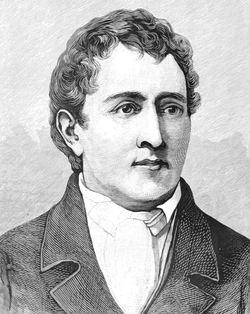
Back Carl Wilhelm Scheele Afrikaans كارل فلهلم شيله Arabic كارل ڤيلهيلم شيلى ARZ Karl Vilhelm Şeyele Azerbaijani کارل ویلهلم شیله AZB Карл Вільгельм Шэеле Byelorussian Карл Вилхелм Шееле Bulgarian কার্ল ভিলহেল্ম শেলে Bengali/Bangla Carl Wilhelm Scheele BS Carl Wilhelm Scheele Catalan
Carl Wilhelm Scheele | |
|---|---|
 An interpretation of Scheele from the late 19th or early 20th century as no contemporary portraits of him are known (by xylographer Ida Amanda Maria Falander (1842–1927))[1] | |
| Born | 9 December 1742 |
| Died | 21 May 1786 (aged 43) Köping, Sweden |
| Nationality | German-Swedish |
| Known for | Discovered oxygen (independently), molybdenum, manganese, barium, chlorine, tungsten and more |
| Scientific career | |
| Fields | Chemistry |
Carl Wilhelm Scheele (German: [ˈʃeːlə], Swedish: [ˈɧêːlɛ]; 9 December 1742 – 21 May 1786[2]) was a German Swedish[3] pharmaceutical chemist.
Scheele discovered oxygen (although Joseph Priestley published his findings first), and identified molybdenum, tungsten, barium, nitrogen, and chlorine, among others. Scheele discovered organic acids tartaric, oxalic, uric, lactic, and citric, as well as hydrofluoric, hydrocyanic, and arsenic acids.[4] He preferred speaking German to Swedish his whole life, as German was commonly spoken among Swedish pharmacists.[5]
- ^ Gentz, L. "Hur såg Scheele ut?", Svensk Farmaceutisk Tidskrift 1958 (17) 373–394; erroneously dated 1780 in Wikimedia Commons
- ^ Cite error: The named reference
Castle 1886was invoked but never defined (see the help page). - ^ Lundgren, Anders. "Carl Wilhelm Scheele". Encyclopædia Britannica.
- ^ Richard Myers, The Basics of Chemistry (2003)
- ^ Fors, Hjalmar 2008. "Stepping through Science’s Door: C. W. Scheele, from Pharmacist's Apprentice to Man of Science". Ambix 55: 29–49